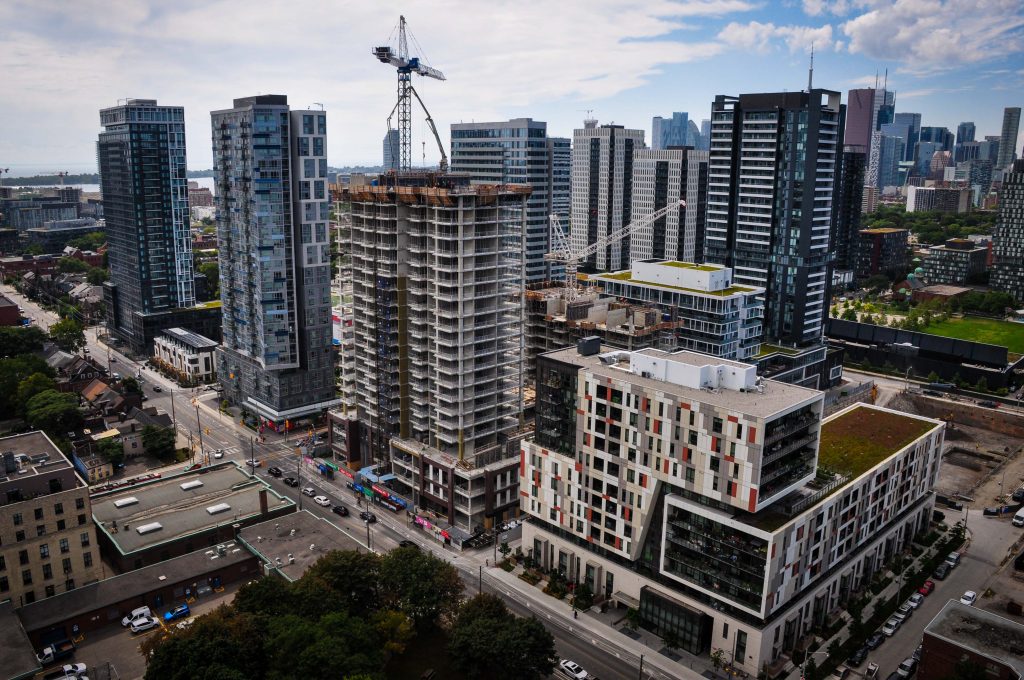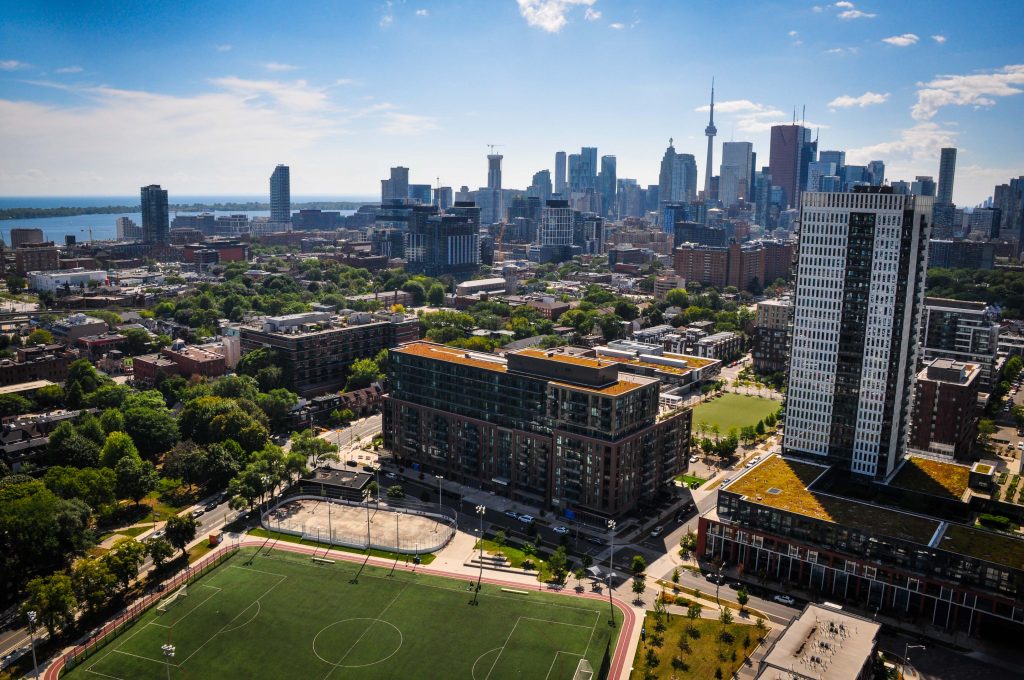Accommodating diverse groups of people within the same city poses a challenge. Toronto has managed to overcome it and continues to strive for a more inclusive and affordable housing market. We caught up with Jennifer Keesmaat, Toronto’s former Chief Planner, who served us up some notable Torontonian examples.
A Brief Geography Lesson
The City of Toronto is located on the northwest shore of Lake Ontario and is home to nearly 3 million people. Of these, 51% are foreign-born, making Toronto one of the most multicultural cities worldwide. No wonder the city’s motto is “Diversity Our Strength”. Toronto also tries to accommodate this diversity through its housing policies and promotes the following vision:
“Toronto is a city with a diverse range of housing opportunities. It is a place where families and individuals live in safe, well-maintained and affordable housing with respect and dignity and where people have equal opportunities to succeed.”
As the city’s former Chief Planner, Jennifer Keesmaat knows Toronto’s housing situation inside out and took the time to share her first-hand knowledge.

A Notable Example from a Notable City: Regent Park
Jennifer mentions that one key aspect of Toronto’s vision for housing is the creation of complete communities. The city aims to develop areas that provide residents with everything they need, i.e., job opportunities, schools, shops, etc. – within reach on foot or public transport. One such complete community is Regent Park, located east of downtown Toronto.
Looking Back
About a century ago, Regent Park was a built-up area of Victorian row houses. In the 1940s and 1950s, these row houses were torn down and replaced by new social housing. A lot of social housing. In fact, the entire area was made up just of social housing. That soon led to several issues. There were almost no amenities, and the area wasn’t really connected to the rest of the city. As a result, many of the residents felt socially excluded and disconnected from the rest of Toronto. People also lacked job opportunities, and Regent Park was soon known for its high crime rate. Additionally, several buildings fell into disrepair, accelerating the decline of Regent Park and rendering it one of the least desirable areas of Toronto.
Something had to be done. But “transforming an urban place where people already live into something better is a tricky exercise,” Jennifer highlights. What was needed was a complex and effective strategy that would improve Regent Park without gentrifying it and displacing its residents. And that is exactly what the City of Toronto managed to do. Jennifer beams with pride as she says: “This is a fascinating story of urban evolution.”

Team Up & Mix Up
The key to the city’s success? A public-private partnership. The City of Toronto teamed up with the Toronto Community Housing Corporation and private development partners, as well as community partners. This partnership enabled the transformation of Regent Park on multiple levels whilst ensuring residents weren’t displaced.
Even though residents were required by necessity to move out of the area while it was being renewed, they had the right to return and then to be housed in a home that suited their needs. Multiple partnerships – with the community, business leaders, local government, etc. – resulted in a wide range of different housing options and built forms: from affordable rental units and freehold flats to owned townhouses.
These different housing options have many benefits. One is that they cater to the needs of Toronto’s diverse population. Low-income families, middle-income earners, renters, homeowners, immigrants, and long-established Torontonians – Regent Park offers something for everyone. As Jennifer puts it:
“This is a place where you can come from pretty much anywhere in the world and begin your life as a Canadian citizen and thrive.”
What’s more: it is impossible to distinguish between publicly held and privately owned buildings. Regent Park is a unified community where people are hardly judged by the type of housing they live in.
However, Regent Park wasn’t just about getting the mix of built forms and their users right. It was also about having a good mix of uses, i.e., the partnership wanted to fulfil Toronto’s vision of complete communities. That’s why several social, cultural, and commercial amenities were created, including an aquatic centre, athletic grounds, and a supermarket – all within walking distance. The community can easily access a wide range of services and infrastructure.

The Importance of Citizen Engagement
Now, when wanting to fundamentally transform a community, who should you talk to? Toronto’s answer is clear: its residents. But engaging residents in city planning (and in making housing policies!) sounds easier than it is. For instance, organising community meetings may not be enough. Jennifer tells us:
“When I was Chief Planner of Toronto, we wanted to understand who was showing up and participating at our community meetings. Not surprisingly, we discovered that the vast majority of people participating in city planning processes were actually homeowners, who were white and over sixty-five.”
This didn’t represent Toronto’s diversity. That’s why a couple of years ago, Jennifer and the City of Toronto created the Planning Review Panel. It is a 32-member advisory body assisting the city council in developing planning initiatives. Its members are chosen through a Civic Lottery; meaning, invitations to become part of the panel are sent out at random to people around the city. These people can then register their interest. Afterwards, 32 of them are chosen based on their gender, ethnic background, age, etc. This creates a panel reflecting Toronto’s diversity. The panel then serves a two-year term after which the Civic Lottery is run again.
Those who are not lucky enough to be chosen can still participate in the city’s planning processes, however, as Toronto offers a wide range of other opportunities to get involved.
What the Future Holds
Toronto’s efforts don’t stop there. In 2019, the city developed a housing action plan for the next ten years. The HousingTO 2020-2030 Action Plan aims to “create a range of housing opportunities across the full housing spectrum – from homelessness to rental and ownership housing”. This, likewise, shall be achieved through a public-private partnership.
The plan includes several actions, such as the:
- adoption of a revised “Toronto Housing Charter – Opportunity for All”,
- maintenance of and increased access to affordable rents,
- continued revitalisation of neighbourhoods,
- creation of new rental housing,
- improvement of accountability and transparency in the delivery of housing services to residents.
We are thrilled to see how it all pans out!
Lessons from Toronto
Dos
- Provide a range of different housing options: affordable housing will not happen by accident.
- Make public and private housing indistinguishable from one another.
- Ensure a mix of users and uses to animate the community.
- Create complete communities (that are also focused on increasing pedestrianism).
- Give people the chance to participate actively and engage the community: more participation in the process means better outcomes.
Don’ts
- Don’t do too much of one thing (e.g., social housing). Provide a wide range of amenities and different housing options. Communities thrive on diversity.
- Don’t displace residents. Planning for the needs of existing residents must always be paramount.
- Don’t stick with old participation models if they fail to reflect – and embrace – the diversity of your city.
To find out more about Jennifer’s work in the City of Toronto, watch this video by The Life-Sized City & CityChangers.org.


